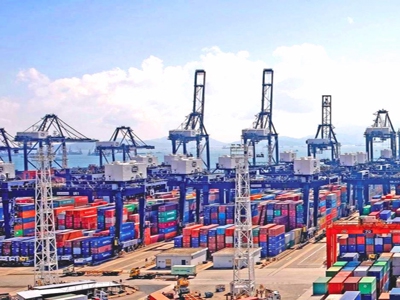Approved Code of Practice and guidance
The Health & Safety Executive (HSE) has published an approved code of practice and guidance covering safety in dock operations. This Approved Code of Practice (ACOP) aims at people who need to comply with the provisions of the Health and Safety at Work Act 1974. This includes people who control dock premises, suppliers of plant and equipment, dock employers, managers, safety officers, safety representatives and workers.
ACOP includes guidance for the following categories:
- Managing for health and safety in docks
- Workplace transport
- Working at height
- Lifting operations
- Slips and trips
- Rescue and life-saving from water
- Transport by water
- Lighting
- Dusty cargoes
- Musculoskeletal disorders
- Confined spaces
- Emergency planning
- Personal protective equipment
- Lone working
- First aid
- Accident reporting
| Legal duties for managing health and safety at work |
|
The Management Regulations require employers to put in place arrangements to control health and safety risks. As a minimum, employers should have:
|
| Confined spaces and how to reduce the risks |
|
Where a confined space on a ship is involved, co-operation between the shoreside employer and master is essential to ensure that all relevant risks are managed and duties are adequately discharged. Avoid carrying out tasks in confined spaces but, if this not possible, the risks will need to be assessed and control measures implemented. Items to consider will include:
On each occasion for the same confined space the risks will need to be reassessed as things may have changed, the task and equipment being used may be different and it may not be the same person doing the work. |
| Personal Protective Equipment (PPE) |
|
Making the workplace safe includes providing instructions, procedures, training and supervision to encourage people to work safely and responsibly. Even where engineering controls and safe systems of work have been applied, some hazards might remain. In these cases, employers have duties concerning the provision and use of PPE at work, and employees have a duty to use PPE correctly and in accordance with instructions. PPE must only be used as a last resort. If PPE is still needed after implementing other controls, employers must provide this for their employees free of charge. PPE is equipment that will protect the user against health or safety risks at work. It can include items such as life jackets, safety helmets, gloves, eye protection, high-visibility clothing, safety footwear and safety harnesses. It also includes respiratory protective equipment (RPE). When selecting suitable PPE, consider:
To ensure the suitability of PPE:
Never allow exemptions from wearing PPE for those jobs that only take a few minutes’. |
Find out more by reading the Approved Code of Practice for Safety in docks issued by HSE:


































































